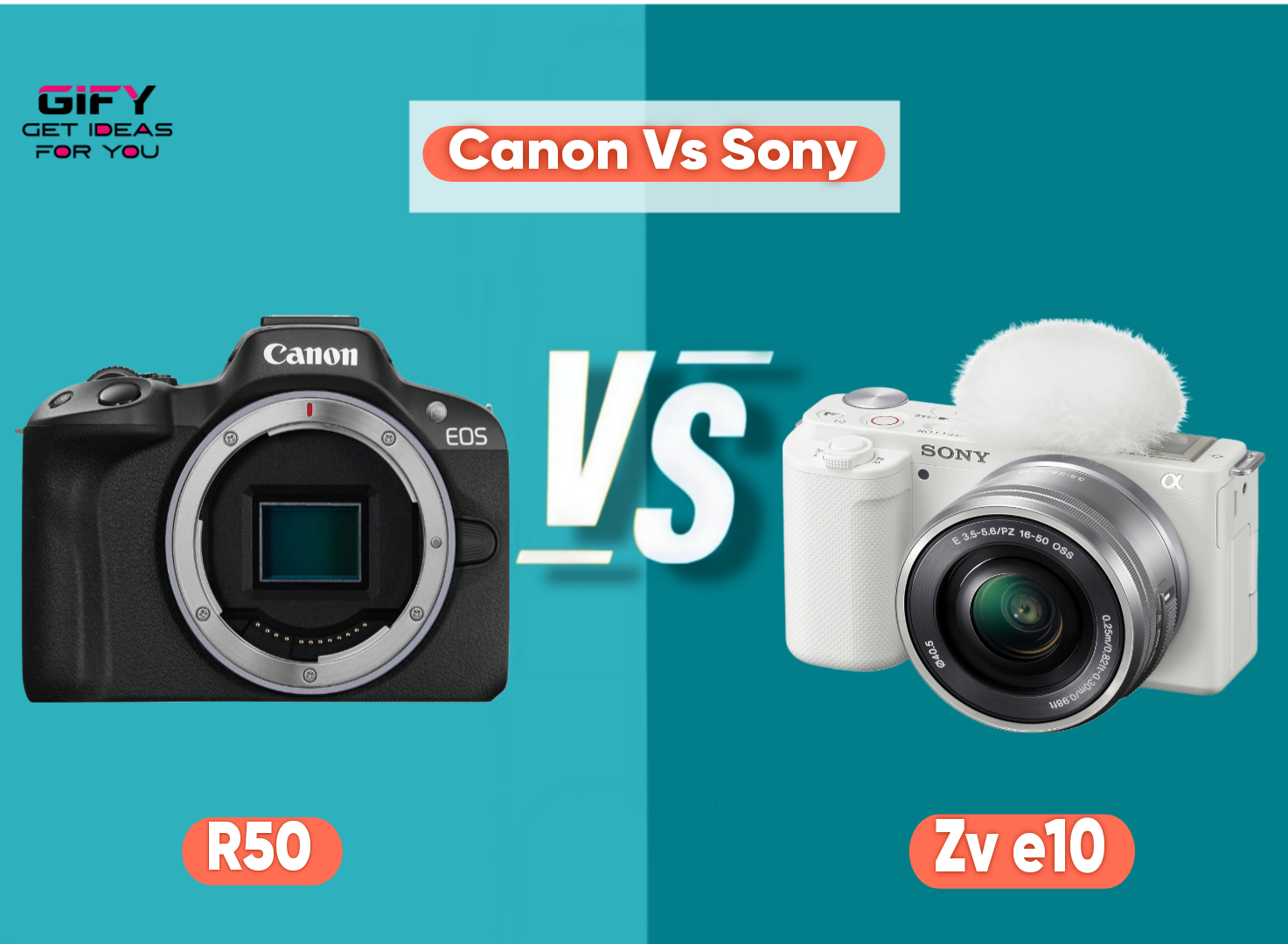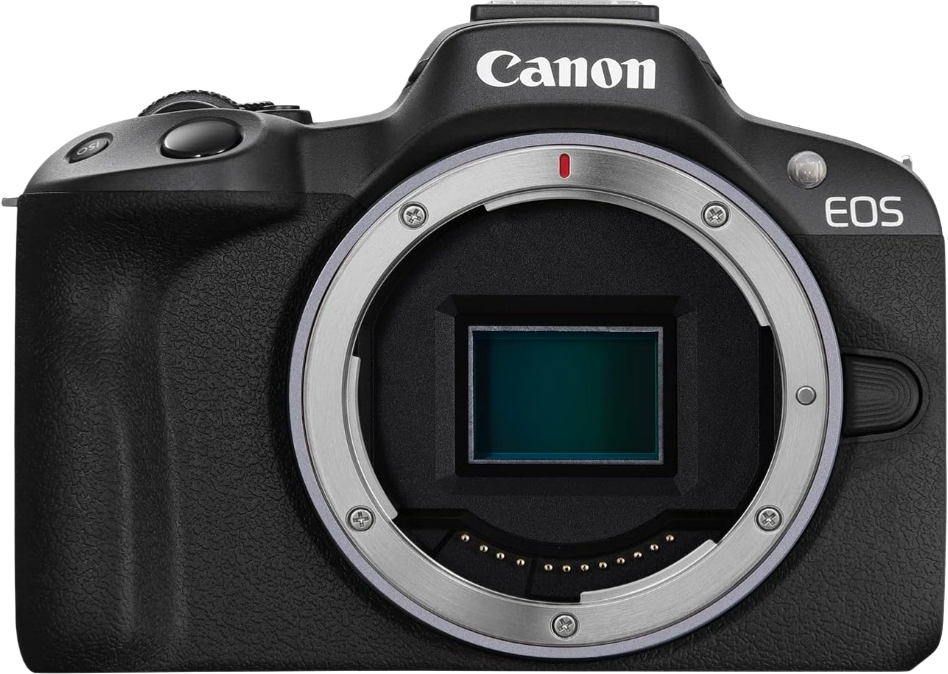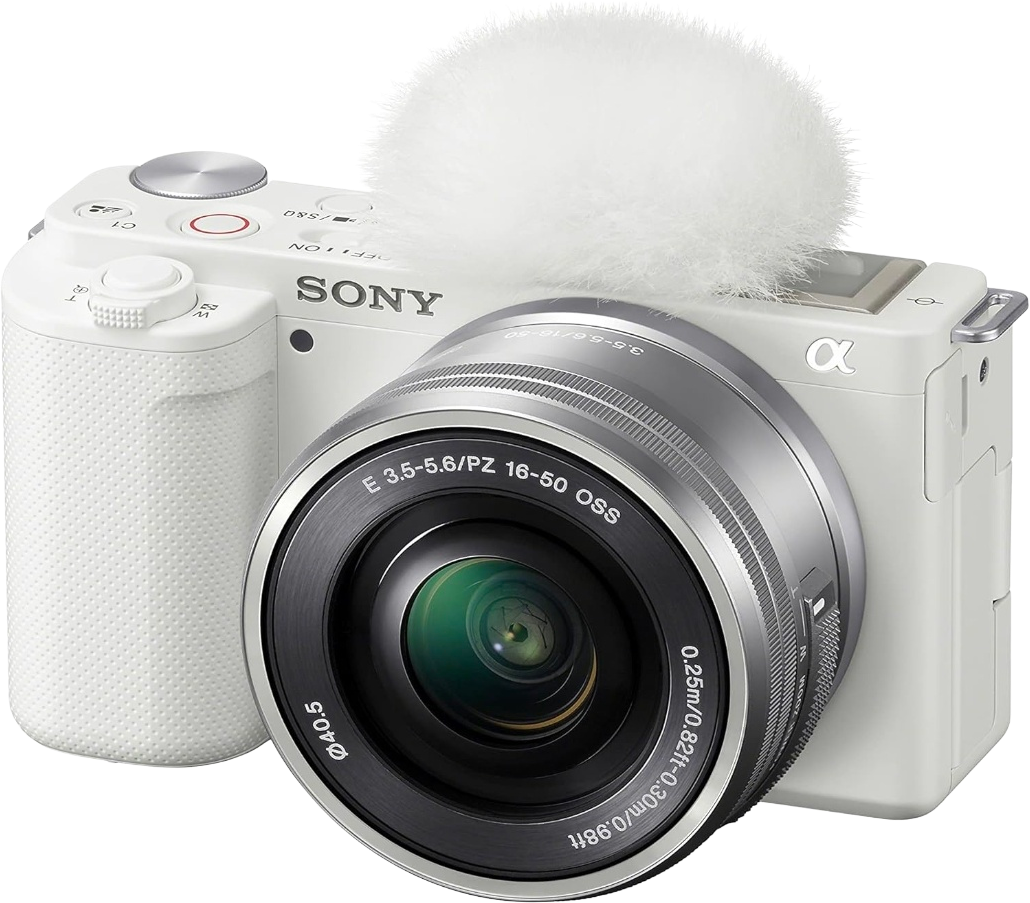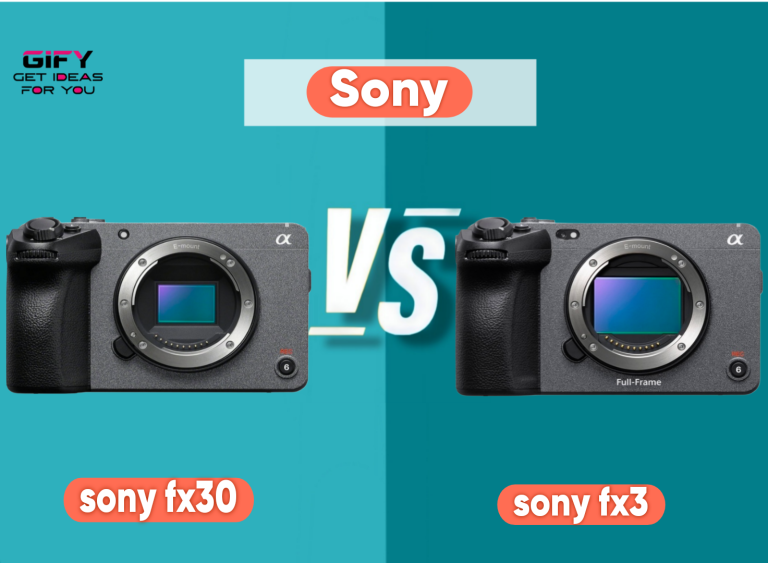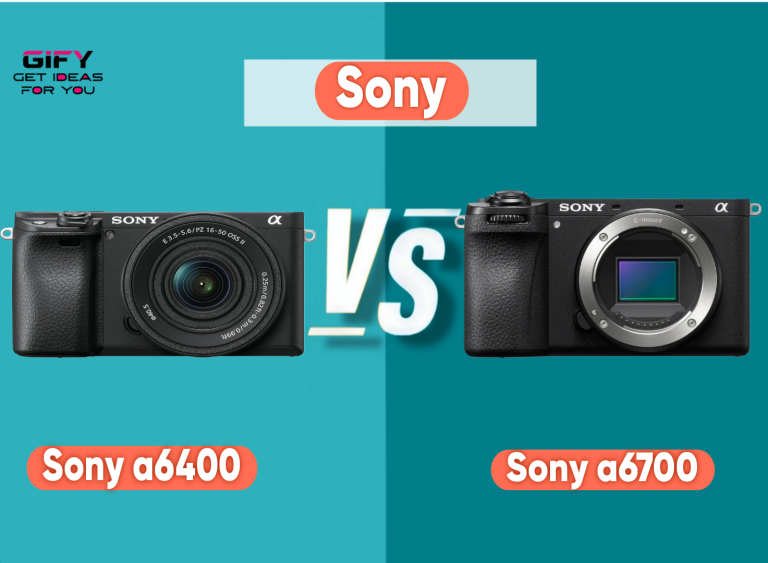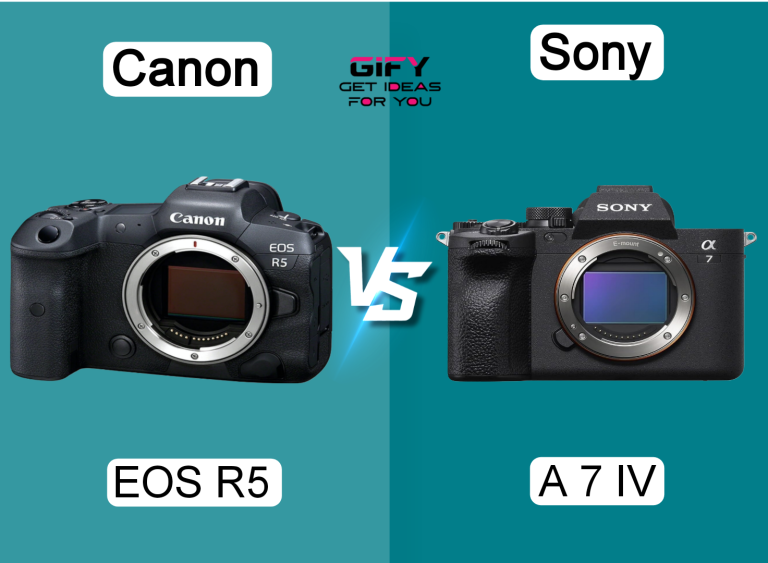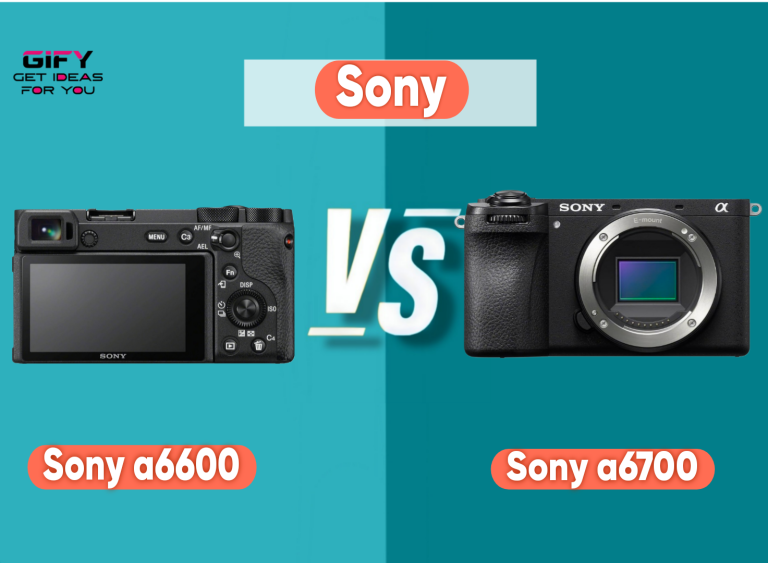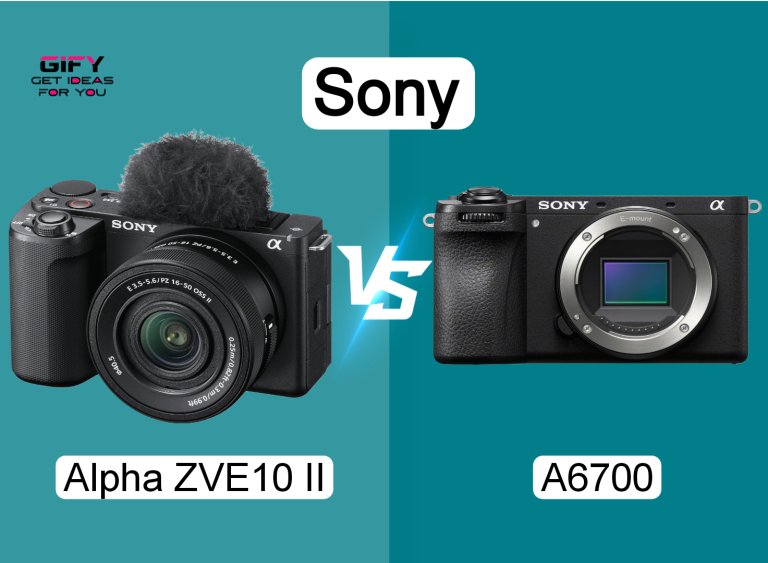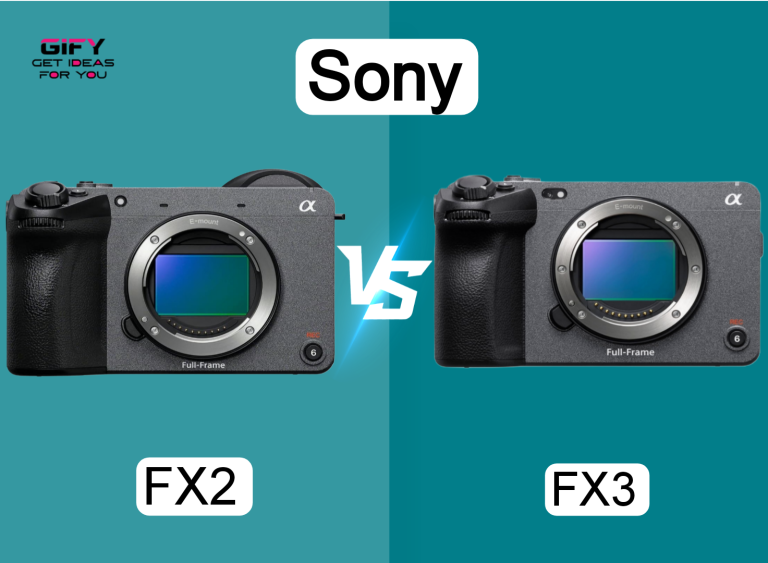Canon R50 vs Sony ZV E10 comparison is one of the most exciting debates for content creators and photography lovers in 2025. Both cameras pack powerful features inside compact mirrorless bodies designed for vloggers, travelers, and hybrid shooters. In this detailed comparison, you’ll discover how these two APS-C cameras differ in image quality, video performance, autofocus, and overall usability — helping you decide which one suits your needs best.
Both Canon and Sony have been at the top of the mirrorless game for years. The Canon R50 continues Canon’s legacy in the RF mount lineup, bringing an affordable yet high-performance option for new creators. The Sony ZV-E10, on the other hand, builds upon Sony’s proven vlogging series, with fast autofocus and excellent video capabilities. The competition is tight, but subtle differences make each model shine in unique ways.
This Canon R50 vs Sony ZV-E10 review dives into real-world usability, video recording quality, autofocus reliability, battery performance, and lens ecosystem support. Whether you’re a beginner looking to upgrade from a smartphone or a professional needing a lightweight second camera, understanding these differences will help you make a confident choice.
Let’s explore how each camera performs in daily use, their key strengths and weaknesses, and what makes them stand out in the crowded mid-range mirrorless category.
Canon R50 – Smart Creativity
The Canon EOS R50 is one of Canon’s most beginner-friendly and compact RF mount cameras, designed for creators who want professional results without carrying heavy gear. Its 24.2MP APS-C CMOS sensor delivers outstanding clarity, while the DIGIC X processor ensures fast image processing and accurate color tones. This combination gives users DSLR-like performance in a much smaller and easier-to-handle body.
Detailed Overview
The Canon R50 captures 4K uncropped video at up to 30 frames per second, oversampled from 6K resolution for excellent detail and color accuracy. You can also shoot Full HD at up to 120 fps, perfect for slow-motion effects. The Dual Pixel CMOS AF II system covers nearly the entire frame with 651 autofocus zones, allowing precise subject tracking whether you’re filming a talking head, a pet, or even a moving vehicle.
Canon’s Movie for Close-up Demo Mode is an excellent addition for content creators who frequently show products on camera. The camera automatically shifts focus from your face to the item as soon as it’s brought close to the lens — no need for manual adjustments. Combined with its intuitive touchscreen interface and comfortable grip, the R50 makes it incredibly easy to record professional-quality videos straight out of the box.
For photography, the 24.2MP APS-C sensor produces rich, detailed images with Canon’s signature warm tones. Shooting at up to 15 fps with the electronic shutter or 12 fps with the electronic first curtain, it handles fast-moving subjects well. The built-in flash and Advanced A+ Assist mode help beginners shoot confidently in any environment, including low light or backlit conditions.
What Is Good
The Canon R50 shines with its powerful autofocus system, lightweight design, and user-friendly controls. Beginners appreciate how intuitive it feels, while experienced users value the strong image quality and reliable color reproduction. The 4K video performance, especially the lack of a crop, adds real flexibility for vloggers and travel filmmakers.
- Uncropped 4K recording oversampled from 6K
- Excellent autofocus with subject detection for people, animals, and vehicles
- Compact and lightweight body for easy travel
- Fast burst shooting at 15 fps (electronic shutter)
- Easy-to-use interface and built-in flash for low-light scenes
What Is Bad
Although the Canon R50 performs exceptionally for its price, it lacks in-body image stabilization (IBIS), which means handheld shots can be shaky without a stabilized lens. The small battery may also limit longer video sessions. Additionally, there’s only one memory card slot, which may concern professionals who need redundancy.
- No in-body image stabilization (IBIS)
- Limited battery life compared to competitors
- Single SD card slot
- No headphone jack for audio monitoring
Overall Verdict
The Canon R50 is a fantastic camera for vloggers, students, and travel photographers who want high-quality results in a small package. It’s easy to learn, fast to operate, and produces beautiful images and videos. If portability and simplicity matter most, the Canon R50 is a smart and stylish choice that balances performance and ease of use perfectly.
Sony ZV-E10 – Creative Power
The Sony ZV-E10 is built for content creators who value flexibility and advanced video options. It combines Sony’s 24.2MP APS-C Exmor CMOS sensor with the powerful BIONZ X processor, offering professional-grade performance in a lightweight, mirrorless form. From crisp 4K footage to smooth live streaming, the ZV-E10 delivers serious creative potential for vloggers and filmmakers.
Detailed Overview
The ZV-E10 records 4K video oversampled from 6K resolution, ensuring outstanding clarity without pixel binning. Its fast hybrid autofocus system locks onto subjects instantly, with real-time Eye AF for both humans and animals. The “Product Showcase” setting is a signature feature that automatically shifts focus from your face to an object you hold — a favorite among YouTubers reviewing products.
One of the most convenient features is the Background Defocus button. With a single press, you can instantly toggle between a blurred background and a sharp one, perfect for cinematic storytelling. The camera also doubles as a plug-and-play live streaming device. Just connect it via USB, and you can broadcast without needing additional capture cards or software — a major advantage for remote creators and streamers.
In still photography, the 24.2MP sensor produces beautiful images with vibrant colors and great dynamic range. Combined with Sony’s E-mount lens ecosystem, users can choose from a vast range of lenses to match any shooting style. The flip-out LCD screen and directional 3-capsule mic make it very easy to vlog in various environments.
What Is Good
The Sony ZV-E10’s greatest strength lies in its hybrid design that serves both photographers and video creators. Its autofocus is lightning-fast and extremely accurate, while features like live streaming support and the Background Defocus button make content creation simple and fun. The availability of E-mount lenses also adds long-term versatility.
- Sharp 4K video oversampled from 6K with full pixel readout
- Instant background blur with dedicated defocus button
- Plug-and-play USB live streaming
- Excellent autofocus with real-time Eye AF
- Compatible with a wide range of Sony E-mount lenses
What Is Bad
While the ZV-E10 performs superbly in most situations, it does have a few trade-offs. The lack of an electronic viewfinder can be inconvenient outdoors, especially under bright sunlight. Rolling shutter can appear in certain fast pans, and the menu system may feel overwhelming to beginners. Its build quality, though solid, is mostly plastic to keep the weight down.
- No built-in viewfinder
- Rolling shutter in fast motion scenes
- Complex menu navigation
- Plastic build feels less premium
Overall Verdict
The Sony ZV-E10 is a powerful choice for vloggers and hybrid creators who focus primarily on video. It’s feature-rich, easy to use, and offers top-tier autofocus performance. With direct streaming capability and flexible lens support, it’s a long-term investment for creators who want more control and versatility.
Common Features
Both the Canon R50 and Sony ZV-E10 share many core strengths, making them ideal for creators who value portability and creative control. Here are the main areas where they align:
- Best For: Both cameras target vloggers, beginners, and travel shooters who want professional quality without the bulk.
- Video: Each offers 4K recording with excellent sharpness and oversampling from higher resolutions. They both deliver impressive color depth and clarity, ensuring cinematic video output.
- Photography: The 24.2MP APS-C sensors in both cameras provide detailed, dynamic stills with strong color accuracy and low-light performance.
- Autofocus: Canon’s Dual Pixel CMOS AF II and Sony’s Real-time Eye AF are both among the best autofocus systems in this category. They excel at tracking moving subjects accurately.
- Ergonomics: Both cameras feature lightweight designs and flip-out LCD screens that make vlogging easier from any angle. Their button layouts are intuitive and creator-focused.
- Audio: Built-in microphones perform well on both, capturing clear voice audio. Each also supports external mics for improved sound quality in professional setups.
- Battery Life: Battery performance is decent on both models. While not record-breaking, they provide enough power for moderate shooting sessions and can be recharged via USB.
- Lens Selection: Canon’s RF-S and Sony’s E-mount systems both offer a growing range of lenses. Sony has the edge in quantity, while Canon’s new RF lineup promises future innovation.
- Extra Features: Each camera includes smart creative tools — Canon’s Advanced A+ Assist and Movie Demo Mode versus Sony’s Product Showcase and Background Defocus — all built to simplify shooting.
Overall, both cameras are designed to make content creation easy and enjoyable. They handle photography and videography equally well, with differences that cater to individual style preferences rather than major performance gaps.
Related Article 🎀
Point 1: Check out our detailed guide on Canon PowerShot vs Sony Cyber Shot to explore how Canon’s entry-level models compare for new photographers.
FAQs About Canon R50 vs Sony ZV E10
Which camera is better for vlogging?
Both are excellent, but the Sony ZV-E10 offers more vlogging-focused tools like the Background Defocus button and USB live streaming. The Canon R50 is better if you prefer an easier learning curve and Canon’s color science.
Do both cameras shoot 4K video?
Yes, both capture 4K video oversampled from 6K for enhanced detail. The Canon R50 records uncropped, while the ZV-E10 provides full pixel readout with no binning.
Which camera has better autofocus?
The autofocus systems are equally advanced. Canon uses Dual Pixel CMOS AF II with smart tracking, while Sony features Real-time Eye AF that locks onto eyes instantly.
Is there a big difference in lens selection?
Yes, Sony’s E-mount system currently offers a larger variety of lenses. However, Canon’s RF-S lineup is rapidly expanding and offers native options optimized for compact bodies.
Which one is more beginner-friendly?
The Canon R50 is slightly more beginner-friendly thanks to its guided menu and automatic scene recognition. Sony’s ZV-E10 offers more manual control, suitable for growing creators.
Conclusion
The Canon R50 vs Sony ZV-E10 battle comes down to what kind of creator you are. Both cameras offer similar image quality, reliable autofocus, and 4K video recording. The choice largely depends on your workflow and preferences.
If you want a straightforward, easy-to-use camera that captures great photos and videos with minimal setup, the Canon R50 is an excellent pick. It’s compact, colorful, and perfect for creators who value simplicity.
However, if your focus is on vlogging, streaming, or cinematic storytelling, the Sony ZV-E10 gives you more flexibility and control. Its advanced video features and large lens ecosystem make it a future-proof tool for serious creators.
Whichever you choose, both the Canon R50 and Sony ZV-E10 prove that compact mirrorless cameras can deliver big results without breaking the bank.

